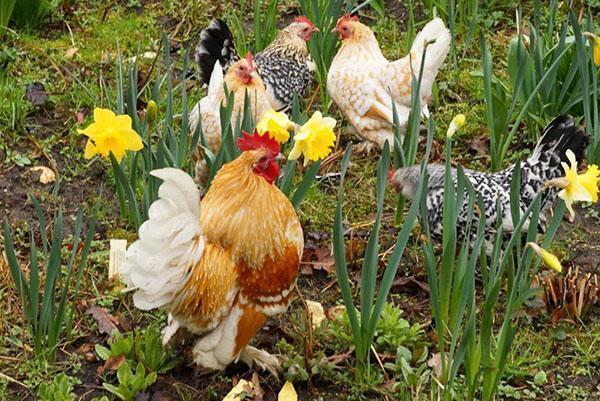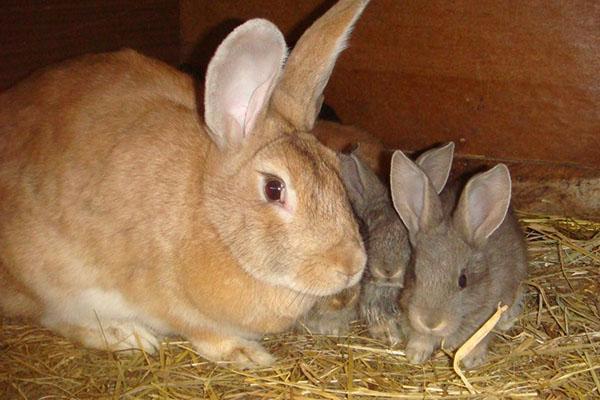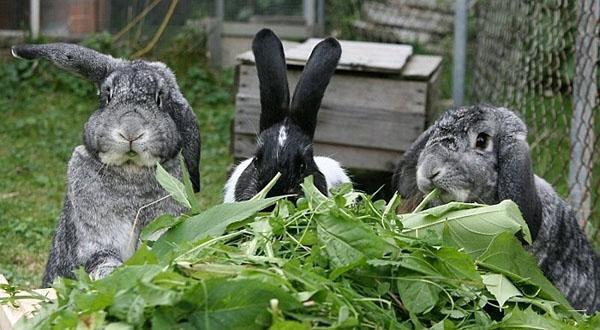May on a home farm: the cares and joys of a livestock breeder
 Today, more and more owners of personal plots and even summer residents keep rabbits, goats, chickens, ducks and geese in their farms. May is the time when life on the home farm is active.
Today, more and more owners of personal plots and even summer residents keep rabbits, goats, chickens, ducks and geese in their farms. May is the time when life on the home farm is active.
At this time, most of the inhabitants have offspring, it is time to replenish the poultry population, put things in order on summer walking grounds, and also diversify the diet of the wards due to fresh greens.
Rabbit keeping in May

Since the air temperature rises significantly in May, rabbits can drink more than before, especially if the cages are exposed to the sunny side. Since May, green food has been actively included in the menu of fluffy pets. For rabbits, this is not only a delicacy, but the richest source of vitamins, protein, fiber and the same moisture. Among the first May "salads":
- mother and stepmother;
- nettle, which rivals carrots in carotene content;
- dandelions;
- plantain;
- juicy burdock shoots;
- the eternal enemy of the gardener is wheatgrass, which in May is actively weed out from the beds.
So that animals do not have digestive disruptions from a sharp change in diet, the herbs are slightly wither before serving, and at the same time they are sorted out to make sure that the collection is safe.
 Such a precaution will not hurt, since dangerous plants can easily come across in the May forbs, for example:
Such a precaution will not hurt, since dangerous plants can easily come across in the May forbs, for example:
- digitalis;
- caustic buttercup;
- anemone;
- hemlock;
- celandine.
For rabbit breeders, daily chores in the garden in May are another opportunity to quickly feed their growing fluffy herd. In addition to wheatgrass, old leaves left after transplanting and renewing strawberries, rape, woodlice grass, as well as young shoots of tansy that raise their appetite will go to the feeding trough for the animals. Pruning berry bushes in May is also a significant addition to the menu.
If rabbits still show signs of disorder, including a small amount of wormwood, oak leaves and chamomile in the diet will help.
Goats at the backyard: maintenance in May
 All the listed features of May rabbit diet fully apply to domestic goats, which until then were content with branches and root crops. Since May, when the snow has completely melted and the soil has dried out enough, the animals are gradually transferred to pastures.
All the listed features of May rabbit diet fully apply to domestic goats, which until then were content with branches and root crops. Since May, when the snow has completely melted and the soil has dried out enough, the animals are gradually transferred to pastures.
To eliminate intestinal disorders, especially in the kids that have appeared this spring, the livestock are fed with hay before grazing. For the first time, it is better to walk young animals on the lawn no more than 2 hours in a row.
The succulent grass is not enough to cover the goats' need for water, so it is given additionally, slightly salting the liquid and, for prevention, adding 5 drops of an alcohol solution of iodine to a bucket of water.
Poultry in May
 Poultry farmers in central Russia breed chickens in May, which, thanks to an increase in daylight hours, the arrival of heat and a variety of food supplies, grow well and gain weight. By the fall, such birds are fully fledged and acquire a solid adult appearance.
Poultry farmers in central Russia breed chickens in May, which, thanks to an increase in daylight hours, the arrival of heat and a variety of food supplies, grow well and gain weight. By the fall, such birds are fully fledged and acquire a solid adult appearance.
In May, when steady heat comes, it is useful to transfer the young to summer houses.Such housing, of course, is equipped with heating in case of recurrent cold weather, but walking in the fresh air under the sun is a good prevention against many diseases, including rickets.
In the spring, chickens eat greens with a huge appetite, so some summer residents and villagers allocate an open-air cage for the bird with free grazing, and also feed them with nettles, woodlice, green onions, tops of early vegetables, such as radish, lettuce and cabbage.
Nettle is a long-proven top dressing that helps to increase the egg production of layers, as well as make the yolks brighter and more sunny.
 The turkey poults that appeared in the spring in May celebrate their monthly anniversary, and in dry sunny weather they are released for grazing, additionally providing the hen and the young generation with grain and the necessary mineral supplements.
The turkey poults that appeared in the spring in May celebrate their monthly anniversary, and in dry sunny weather they are released for grazing, additionally providing the hen and the young generation with grain and the necessary mineral supplements.
Chicks of waterfowl are growing up. Goose in May they begin to fledge, so they also need energy-rich grain and vitamin and mineral supplements. Youngsters are allowed to the water when molting is complete.
 With free grazing of geese, chickens, turkeys and especially ducks, the bird actively feeds, and eats not only grass, but also all kinds of pests. Gardeners know how much harm they cause beetle larvae... They are happily dug out of arable land and eaten by ducks. Chickens with passion hunt for the first caterpillars of white butterflies, and adult chickens - for slugs lurking in humid places.
With free grazing of geese, chickens, turkeys and especially ducks, the bird actively feeds, and eats not only grass, but also all kinds of pests. Gardeners know how much harm they cause beetle larvae... They are happily dug out of arable land and eaten by ducks. Chickens with passion hunt for the first caterpillars of white butterflies, and adult chickens - for slugs lurking in humid places.
Already at the end of spring, the poultry breeder should take care of the presence of a comfortable bath with a gentle approach, sunny walking and an awning in case of a hot day and the opportunity for the bird to wait out the hottest hours in the shade.
Everyone who is engaged in breeding poultry, goats, rabbits and other animals is well aware that May is a very difficult time, but also rewarding. The efforts spent will not be wasted, and all investments will quickly and a hundredfold return.